Loading
Journal of Nanotechnology and Nanomaterials
ISSN: 2692-630X
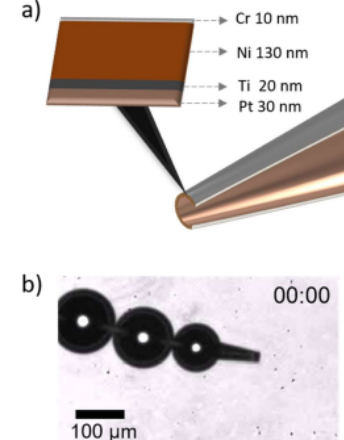
2022
Volume 3, Issue 1, p1-60
Articles published in this issue are Open Access and licensed under Creative Commons Attribution License (CC BY NC) where the readers can reuse, download, distribute the article in whole or part by mentioning proper credits to the authors.
Deformation of Nanoglass under High-pressure Torsion
Yue Dong, Hans-Jörg Fecht
Metallic glasses are amorphous solids with metallic atomic bonds. Different from traditional crystalline metals, they have no long-range atomic order. Only short-range order on the scale of 0.5–1 nm can be detected. Because of the lack of a lattice dislocation slip system, as in crystalline alloys, metallic glasses exhibit some outstanding properties,
J Nanotechnol Nanomaterials, 2022, Volume 3, Issue 1, p1-7 | DOI: 10.33696/Nanotechnol.3.026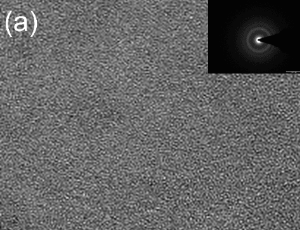
A Comprehensive Commentary of “Smart Design of High-Performance Surface Enhanced Raman Scattering Substrates”
Xiangyu Meng, Lin Qiu, Xiaotian Wang, Lin Guo
Recently, our group published a review about surface enhanced Raman scattering (SERS) in SmartMat, which summarized the recent developments of noble metal and semiconductor SERS substrates, and then proposed the key factors for substrate design and future directions.
J Nanotechnol Nanomaterials, 2022, Volume 3, Issue 1, p8-10 | DOI: 10.33696/Nanotechnol.3.027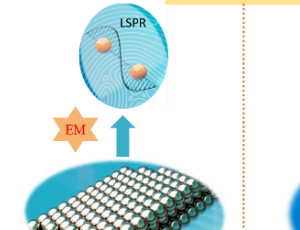
Small Scale Propulsion: How Systematic Studies of Low Reynolds Number Physics Can Bring Micro/Nanomachines to New Horizons
Paul Wrede, Mariana Medina-Sánchez, Vladimir M. Fomin
Miniaturization can be considered as the main driving cause for the tremendous technological advances within the last decades. Besides smaller and faster mechanical and electrical devices, scientists engineered new machines at the micro- and nanometer scale also referred to as micro-/ nanomotors, -swimmers or -robots.
J Nanotechnol Nanomaterials, 2022, Volume 3, Issue 1, p11-16 | DOI: 10.33696/Nanotechnol.3.028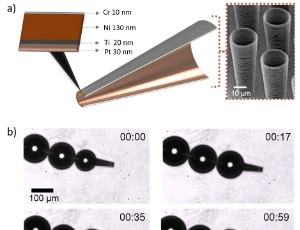
A Review on Nanotechnology: Applications in Food Industry, Future Opportunities, Challenges and Potential Risks
Monalisha Sahoo, Chirasmita Panigrahi, Siddharth Vishwakarma, Jayant Kumar
Nanotechnology is an evolving revolution with enormous promise in a variety of fields, including mechanics, medicine, and the food business. Nanoparticles owing to having greater surface area and enhanced rates of mass transfer seem to pose higher biological and chemical activities, penetrability, catalytic behaviour, enzymatic reactivity, and quantum
J Nanotechnol Nanomaterials, 2022, Volume 3, Issue 1, p28-33 | DOI: 10.33696/Nanotechnol.3.029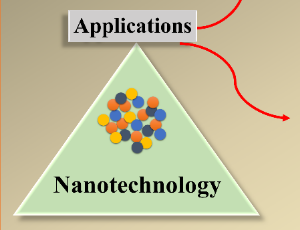
Microencapulsation: Probiotics, Prebiotics, and Nutraceuticals
Ekta Jagtiani, Sachin Adsare
Numerous studies have been advanced to establish a link between gut health and immunological function and to explain how probiotics, prebiotics, nutraceuticals affect the gut microbiota and immune function. A probiotic must possess favourable technical features, be able to live in the upper gastrointestinal system, and operate in the gut
J Nanotechnol Nanomaterials, 2022, Volume 3, Issue 1, p34-60 | DOI: 10.33696/Nanotechnol.3.030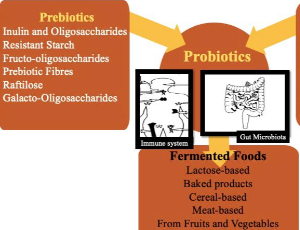
Recommended Articles
DNA Nanotechnology Engineered Vesicle for Mimicking Biomolecular Signaling
Bio-inspired strategy is kind of interesting to fabricate devices and perform dynamic operations [1]. Various devices have been made, such as airplane, radar and submarine. In life science, as the fundamental entity, million years’ evolution enables cell becomes the most successful functionality.
Exploiting Nanotechnology to Target Viruses
Infectious diseases caused by microorganisms of the most varied natures and by viral entities cause millions of deaths every year. Around the world, viral infections have impacted civilizations’ circumstances since the earliest times, including the current panorama of the SARS-CoV-2 pandemic known as coronavirus disease in 2019 (COVID-19). In this sense, in the last century,
In silico Analysis for the Repurposing of Broad-spectrum Antiviral Drugs against Multiple Targets from SARS-CoV-2: A Molecular Docking and ADMET Approach
SARS-CoV-2 belongs to the genus Beta of the Coronaviridae family of enveloped single-stranded, positive-sense ribonucleic acid (RNA) with a genome length of 30,000bp. The virion is composed of various non-structural (RNA dependent RNA polymerase also known as RdRp) and structural proteins such as Spike (S), Nucleocapsid (N), Matrix (M), and Envelope (E) proteins.
Multidirectional Benefits of Nanotechnology in the Diagnosis, Treatment and Prevention of Tuberculosis
Despite the curious advancement in medical science and therapeutics, tuberculosis (TB) persist the primary factor of mortality than any other infectious disease and socioeconomic disaster for millions of people around the world. According to the World Health Organization (WHO), World’s One-third of the population is infected with this disease and of these, 8 to 10 million people develop active disease and 2 million people die each year and the rest of the infected people remain asymptomatic.
Green Nanotechnology: The Influence of Intermolecular and Supramolecular Interactions
In the last decade, the study of nanometer-scale particles has grown exponentially worldwide. This growth is due to the broad field of nanostructures applications, which, due to their dimensions in nanometric sizes, have new properties not found in micro and macro scale. These properties result from the increase in the ratio between the surface area and volume, and the nanostructures’ size directly influences these. Tolerance to temperature, variety of colors, changes in chemical reactivity,
The Possible Role of Molecular Vibration in Intracellular Signalling
The exchange of information within the cell is extremely complex. Besides the well-studied chemical signalling, physical signalling is required to fulfil spatial and temporal aspects. The Golgi apparatus and the microtubule skeleton system are the decisive structures for numerous intracellular transport tasks.
Nanotechnology in Water Treatment: An Optimistic Perspective for the Near Future
Unequal access to drinking water and basic sanitation are old issues in Brazil and worldwide. Besides, this situation foments the proliferation of infectious parasitic diseases. Moreover, mainly in underdeveloped countries, it victimizes socioeconomically vulnerable people. The degree of water contamination analysis, usually by fecal matter, is made by the number of microorganisms present in the sample, including Escherichia coli or thermotolerant coliforms. In addition, several
Folic acid-chitosan Nanomaterials for delivery of dietary polyphenols
Despite the health benefits associated with polyphenols, the bioavailability of many polyphenols limits their effects. Problems with poor solubility fast-metabolism and food preparation techniques limit the bioavailability and bioactivity of these dietary micronutrients. Encapsulation of polyphenols has shown to protect and increase bioavailability of these dietary compounds and to enhance their anticancer activity.
Altered Peak C-peptide and Fasting Blood Glucose in Children with Autism Spectrum Disorder
ASD refers to a group of complex neurodevelopmental disorders, characterized by deficits in social communication, interaction and demonstrating restricted, repetitive, and stereotyped patterns of behavior. Centers for Disease Control and Prevention forecasted that the prevalence of ASD would be 1 in 45 in USA.
Nanotechnology for Water Purification – Current Trends and Challenges
Environmental pollution is a significant concern in both developing and developed countries. The pollution load in the environment accumulates as a result of anthropogenic activity. Both organic and inorganic contaminants are hazardous to living things, and their incidence and persistence have risen dramatically in current years.
A Review on Nanotechnology: Applications in Food Industry, Future Opportunities, Challenges and Potential Risks
Nanotechnology is an evolving revolution with enormous promise in a variety of fields, including mechanics, medicine, and the food business. Nanoparticles owing to having greater surface area and enhanced rates of mass transfer seem to pose higher biological and chemical activities, penetrability, catalytic behaviour, enzymatic reactivity, and quantum
Microencapulsation: Probiotics, Prebiotics, and Nutraceuticals
Numerous studies have been advanced to establish a link between gut health and immunological function and to explain how probiotics, prebiotics, nutraceuticals affect the gut microbiota and immune function. A probiotic must possess favourable technical features, be able to live in the upper gastrointestinal system, and operate in the gut
Nanoscale Chitosan-Based Hemostasis Membrane
Excessive bleeding or hemorrhage in traumatic injuries is the leading preventable cause of death in the combat and civilian trauma centers. Nearly 50% of military deaths, 90% of military battlefield casualties, and 33-56% mortalities in civilian’s surgical bleeding are associated with severe bleeding and can be prevented. Hence, significant and rapid hemostasis or bleeding control require innovative strategies with easy to use, stable, and inexpensive processing. Furthermore, the developed hemostatic material should ensure biocompatibility and biodegradability with non-immunogenic properties. To date, a wide variety of hemostatic powders, dressings, and bandages have been investigated as useful materials in reducing hemorrhage.
Aberrant Signaling Pathways in Cancer Cells: Application of Nanomaterials
Cell signaling pathways involve several proteins, called kinases, to pass on vital messages from the transmembrane-proteins, e.g., receptor tyrosine kinases (RTKs) to the nucleus of a cell through a cascade of processes for various activities such as controlled cell division, proliferation, apoptosis, metabolism, DNA replication and repair. Alterations in these signaling proteins combined with genetic and/or epigenetic mutations spawn various types of cancer that empowers the cells to ignore or maneuver the immune signals and carry on felonious activities such as uncontrolled cell division and growth, genetic instability, angiogenesis around the tumor in hypoxia, eluding the body’s immune system, cell migration, and invasion of surrounding healthy cells.
A Short Commentary of Nanotechnology on Traditional Chinese Medicine
Nanotechnology is the art of science manipulating matter at the nanoscale about 1 to 100 nanometers, 10-9 nm ranging from a sheet of paper (100,000 nanometers thick) to a human hair (around 80,000-100,000 nanometers).
Primary Spinal Cord Haemorrhage during COVID-19 Illness: A Novel Addition to the Endless Spectrum of Neurological Manifestations?
Since its discovery in December 2019 severe acute respiratory syndrome coronavirus-2 (SARS-COV2), coronavirus disease-19 (COVID-19) pandemic has opened up a pandora’s box and put the entire health-care industry globally under trial by fire. Neurological manifestations of it started becoming apparent in first few months and as of now we are still facing never-ending gamut of central nervous system (CNS) disorders related to SARS-COV-2 infection.
Comparison of Horizontal blaCTX-M Gene Transfer via Conjugation among Extended Spectrum β-Lactamases Producing Escherichia coli Isolates from Patients with Urinary Tract Infection, Their Animals and Environment
The dissemination of the extended spectrum β-lactamases (ESBL) producing E. coli poses a significant public health problem. Understanding the efficiency and frequency of horizontal gene transfer via conjugation of ESBL producing E. coli is imperative towards devising prevention and control measures. This study compared the frequencies and efficiencies of horizontal blaCTX-M gene transfer via conjugation among Escherichia coli isolates from urine and gastrointestinal tract (GIT) of patients with urinary tract infection (UTI), their animals and environment.
The Diagnostic Value of Neutrophil to Lymphocyte Ratio as an Effective Biomarker for Neuromyelitis Optica Spectrum Disorder
Neuromyelitis Optica (NMO) is a serious condition associated with inflammation. Early diagnosis and detection are critical for early intervention. In this systematic review, we investigate the role of the neutrophil to lymphocyte ratio (NLR) as an important biomarker for NMO.
Commentary on “Review on Nanocrystalline Silicon Thin Films for Heterojunction Solar Cells”
The article presents a commentary for the recent publication on nanocrytalline silicon thin films for heterojunction solar (SHJ) cells. The aim of the communication is to highlight some of the important mechanism discussed in the report for improved structure and interface properties which results in better device fill factor and hence enhanced efficiency. Furthermore, the discussion has been extended to present some of the recent literatures which have followed the similar guidelines for material synthesis with improved optical gain in applications of SHJ solar cells.
About Scientific Archives
Scientific Archives is a global publisher initiated with the mission of ensuring equal opportunity for accessing science to research community all over the world. Spreading research findings with great relevance to all channels without any barrier is our goal. We want to overcome the challenges of Open Access with ensured quality and transparency.
